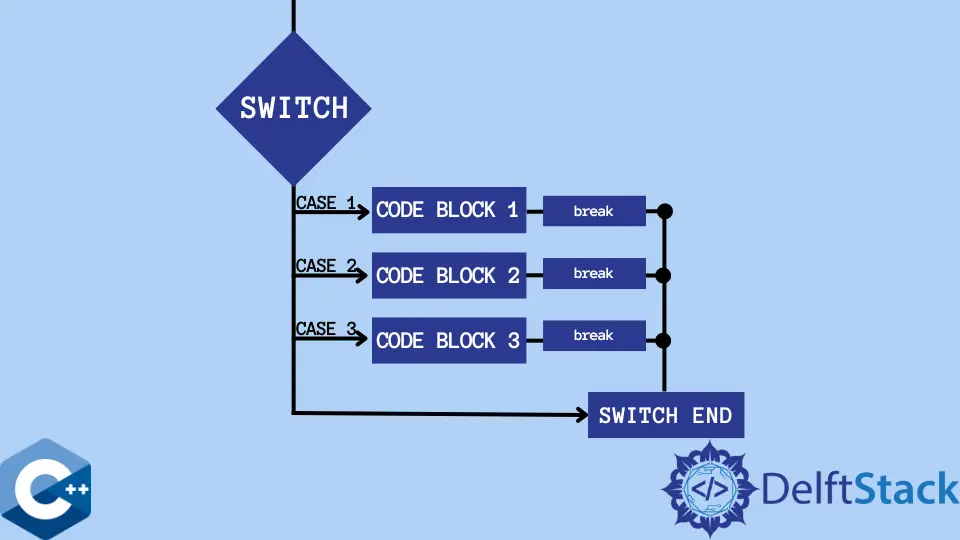Breaks in C++ Switch Statement
- Understanding the C++ Switch Statement
-
The Role of
breakin C++ Switch Statements - Comparing Switch Statements with and without Break
- Conclusion
- FAQ

When working with C++, the switch statement is a powerful tool that allows for efficient branching based on the value of a variable. However, understanding how the break statement interacts with switch cases is crucial for effective programming. The break statement serves as a control mechanism to exit a switch case, preventing fall-through behavior.
In this article, we’ll explore the functionality of break in C++ switch statements and compare scenarios where break is used versus when it is omitted. By the end, you will have a clear understanding of how to leverage switch statements effectively in your C++ programs.
Understanding the C++ Switch Statement
The switch statement in C++ is a conditional control structure that allows for multi-way branching. It evaluates an expression and matches its value against a series of case labels. Each case can execute a block of code, and the use of break determines whether the execution continues to the next case or exits the switch entirely.
Here’s a basic example of a switch statement using break:
#include <iostream>
using namespace std;
int main() {
int day = 3;
switch (day) {
case 1:
cout << "Monday";
break;
case 2:
cout << "Tuesday";
break;
case 3:
cout << "Wednesday";
break;
default:
cout << "Invalid day";
}
return 0;
}
Output:
Wednesday
In this example, when day is equal to 3, the program prints “Wednesday” and then exits the switch due to the break statement. Without break, the program would continue executing subsequent cases, leading to unintended results.
The Role of break in C++ Switch Statements
The break statement is essential in switch statements to prevent fall-through behavior. Fall-through occurs when the program continues executing subsequent case blocks even after a match is found. This can lead to unexpected outcomes, especially if multiple cases share similar logic.
Consider the following example without break statements:
#include <iostream>
using namespace std;
int main() {
int day = 3;
switch (day) {
case 1:
cout << "Monday";
case 2:
cout << "Tuesday";
case 3:
cout << "Wednesday";
default:
cout << "Invalid day";
}
return 0;
}
Output:
WednesdayInvalid day
In this case, since there are no break statements, when day is 3, it prints “Wednesday” and continues to execute the default case, resulting in “Invalid day” being printed as well. This demonstrates how omitting break can lead to confusing and erroneous output.
Comparing Switch Statements with and without Break
Understanding the differences between switch statements with and without break is vital for effective C++ programming. Let’s delve deeper into both scenarios.
Switch Statement with Break
When break is used, the execution of the switch statement stops after the matched case. This ensures that only the code block for the matched case is executed. It provides clear, predictable behavior, making code easier to read and maintain.
Here’s an example:
#include <iostream>
using namespace std;
int main() {
int grade = 85;
switch (grade / 10) {
case 10:
case 9:
cout << "A";
break;
case 8:
cout << "B";
break;
case 7:
cout << "C";
break;
default:
cout << "F";
}
return 0;
}
Output:
B
In this example, the grade is divided by 10 to determine the letter grade. The break statements ensure that only one case executes based on the calculated value.
Switch Statement without Break
Conversely, when break is omitted, multiple cases can execute in sequence, leading to a fall-through effect. This can be useful in certain scenarios where you want multiple cases to share the same block of code.
Here’s an example:
#include <iostream>
using namespace std;
int main() {
int grade = 75;
switch (grade / 10) {
case 10:
case 9:
cout << "A";
break;
case 8:
case 7:
cout << "B or C";
break;
default:
cout << "F";
}
return 0;
}
Output:
B or C
In this case, both 8 and 7 lead to the same output of “B or C,” demonstrating how omitting break can be beneficial for grouping cases.
Conclusion
In summary, the break statement plays a crucial role in managing the flow of control within C++ switch statements. It prevents fall-through behavior, ensuring that only the intended case executes. Understanding when to use break versus omitting it can significantly influence the clarity and functionality of your code. By mastering the use of switch statements in C++, you can create more efficient and manageable programs, enhancing your overall programming skills.
FAQ
- What is the purpose of the break statement in a switch case?
The break statement is used to exit a switch case, preventing the execution from falling through to subsequent cases.
-
Can I have multiple cases without a break?
Yes, you can have multiple cases without a break if you want them to execute the same block of code. -
What happens if I forget to use break in a switch statement?
If you forget to use break, the program will continue executing the next case(s) until it encounters a break or reaches the end of the switch. -
Is it mandatory to use break in every case?
No, it is not mandatory; it depends on the desired behavior of the switch statement. -
Can a switch statement have default case without a break?
Yes, a default case can exist without a break, but it may lead to unintended behavior if not handled correctly.
Nimesha is a Full-stack Software Engineer for more than five years, he loves technology, as technology has the power to solve our many problems within just a minute. He have been contributing to various projects over the last 5+ years and working with almost all the so-called 03 tiers(DB, M-Tier, and Client). Recently, he has started working with DevOps technologies such as Azure administration, Kubernetes, Terraform automation, and Bash scripting as well.
